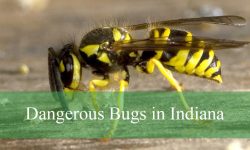Hawaii’s breathtaking islands host an incredible array of colorful birdlife, where flashes of crimson and scarlet brighten the forests and skies. Among the most striking are the red-headed birds, their vivid hues creating stunning contrasts against lush green canopies and tropical light.
Native species like the ʻApapane and ʻIʻiwi embody the spirit of Hawaii’s wild landscapes, while introduced cardinals and finches bring their own beauty to gardens and coastal areas. Each bird tells a story of adaptation, survival, and the islands’ evolving ecosystems.
Highland rainforests, volcanic slopes, and city parks all offer opportunities to spot these radiant birds in their natural surroundings. This guide showcases ten remarkable red-headed species found throughout Hawaii, with detailed identification and habitat insights.
Types of Birds with Red Heads Found in Hawaii
ʻApapane (Himatione sanguinea)
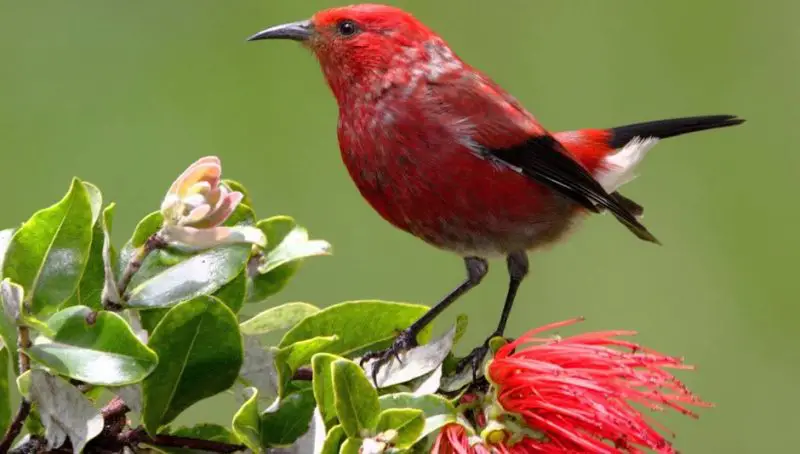
The ʻApapane is one of Hawaii’s most iconic native honeycreepers, easily recognized by its dazzling crimson-red plumage covering most of its body and head. Its black wings and tail contrast beautifully with the bright red feathers, giving it a striking appearance among the lush green forests. Adults typically measure about 5 inches (13 cm) in length, with a slender, slightly curved bill designed for nectar feeding.
This species is highly active and often moves quickly between flowers in search of nectar. ʻApapane are especially drawn to the ʻōhiʻa lehua blossoms, where they feed using their brush-tipped tongues. In doing so, they play an essential role in pollinating native Hawaiian plants.
Their calls consist of a series of melodic whistles and chattering sounds that can vary widely among individuals. These vocalizations are a familiar sound in high-elevation native forests on the Big Island, Maui, and Kauai.
ʻApapane prefer native montane and wet forests, where ʻōhiʻa trees are abundant. They can also be seen foraging in small flocks, especially during the blooming season. Their diet mainly includes nectar, but they occasionally consume small insects for added protein.
Because of their close association with native flora, ʻApapane populations are vulnerable to habitat loss and avian malaria, which is prevalent at lower elevations. Conservation of native forests remains crucial for their continued survival in Hawaii’s delicate ecosystems.
ʻIʻiwi (Drepanis coccinea)
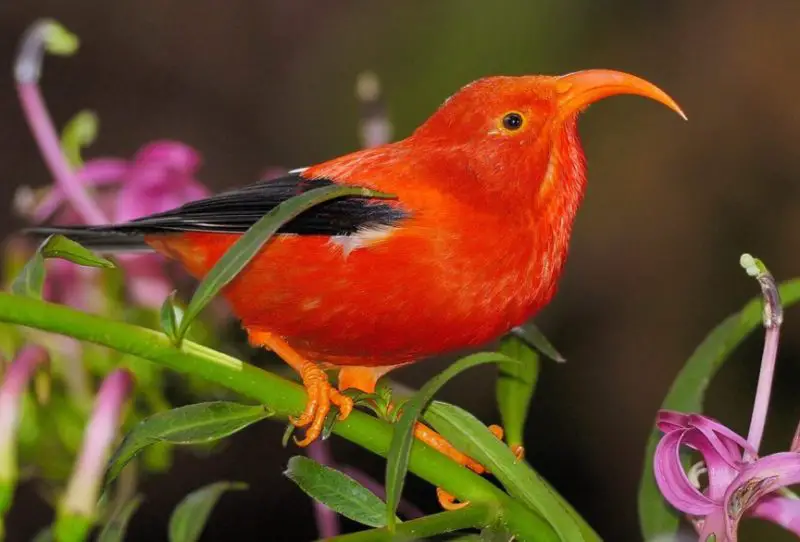
The ʻIʻiwi is another brilliant red honeycreeper native to the Hawaiian Islands, admired for its curved, salmon-colored bill and contrasting black wings. Measuring about 5.5 inches (14 cm) in length, the ʻIʻiwi’s vivid scarlet body makes it one of Hawaii’s most recognizable birds. Its specialized bill is perfectly adapted for sipping nectar from deep tubular flowers like the native lobelias and ʻōhiʻa blossoms.
The ʻIʻiwi is an energetic and acrobatic feeder, often hovering like a hummingbird as it drinks nectar. It has a series of high-pitched whistles and chirps that vary between individuals and locations. Their active nature and loud calls make them easy to detect even before they are seen.
These birds primarily inhabit high-elevation forests above 4,000 feet (1,200 meters), where they are less affected by mosquitoes carrying avian malaria. They are most abundant on Maui and the Big Island but have disappeared from lower-elevation forests on Oahu and Kauai due to disease and habitat degradation.
In addition to nectar, ʻIʻiwi occasionally feed on insects, providing them with essential protein. They help pollinate many native Hawaiian plants, making them a vital part of the island ecosystem.
Conservation efforts focus on protecting native forest habitats and reducing mosquito populations to prevent disease spread. The ʻIʻiwi remains a symbol of Hawaii’s rich natural heritage and a key species in native forest preservation efforts.
Red-crested Cardinal (Paroaria coronata)
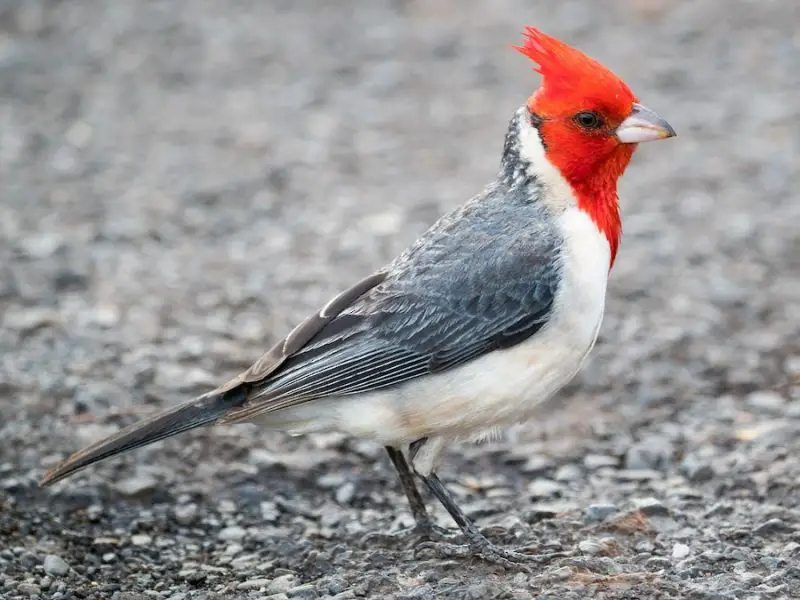
The Red-crested Cardinal is a visually striking bird introduced from South America, now common in Hawaii’s urban and suburban landscapes. It is easily recognized by its brilliant red head and crest, contrasted with a white belly and gray wings. Adults are about 7.5 inches (19 cm) long, and both sexes share similar plumage, though males may appear slightly brighter.
This cardinal is not a true member of the North American cardinal family but rather a tanager species. It has a strong, conical bill well-suited for cracking seeds and picking insects. Its calm behavior and tolerance of human presence make it a familiar sight in parks, lawns, and near outdoor cafes throughout Oahu and the Big Island.
Red-crested Cardinals typically forage on the ground or low vegetation, feeding on seeds, fruits, and insects. They are often seen in pairs or small family groups, sometimes joining mixed flocks of other introduced species such as the House Finch or Zebra Dove.
Their melodic, whistling song adds a charming musical note to the Hawaiian landscape. Males often sing from elevated perches to mark territory and attract mates. Nesting occurs throughout the year in Hawaii’s mild climate, usually in trees or shrubs where they build cup-shaped nests.
Although non-native, this species has established stable populations without posing major threats to native bird species. Its vibrant plumage and pleasant song have made it a beloved sight for both residents and visitors.
Yellow-billed Cardinal (Paroaria capitata)
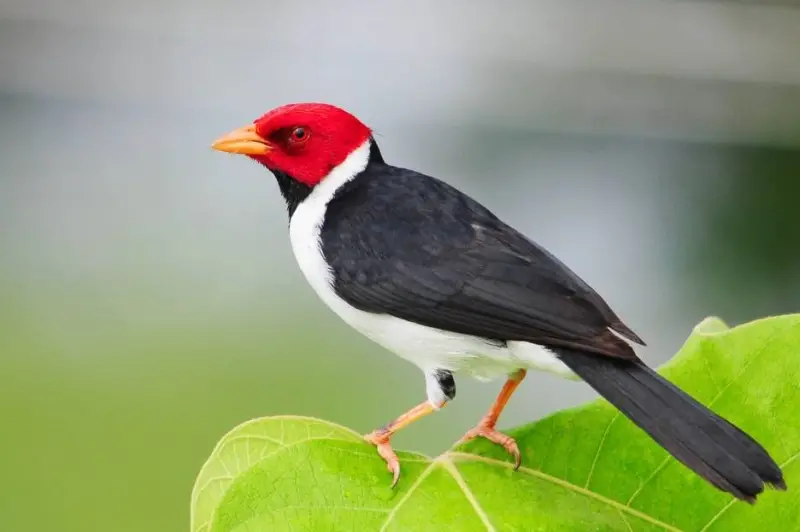
The Yellow-billed Cardinal, another South American introduction, is slightly smaller and less common than the Red-crested Cardinal but equally eye-catching. It features a vivid red head and throat, white underparts, and a glossy black back and wings. The bright yellow bill contrasts sharply with its red face, giving it an unmistakable look.
Adults measure around 6 inches (15 cm) in length, and both sexes share similar coloring. These birds are often found in open habitats such as grassy areas, pastures, and near freshwater streams or ponds. They are particularly common on the Big Island, especially around Hilo and Kona.
Yellow-billed Cardinals feed mainly on seeds, small fruits, and insects. They often forage on the ground, hopping between patches of grass or low shrubs. Their social nature means they are frequently observed in small groups or family flocks.
Their song is a series of clear whistles and chirps, usually delivered from low perches. They nest in dense shrubs or trees, building small cup-shaped nests where the female lays two to four eggs.
This species has adapted well to Hawaii’s environment and is now a familiar resident in lowland habitats. Its striking coloration and lively presence bring an exotic touch to the Hawaiian countryside.
Northern Cardinal (Cardinalis cardinalis)
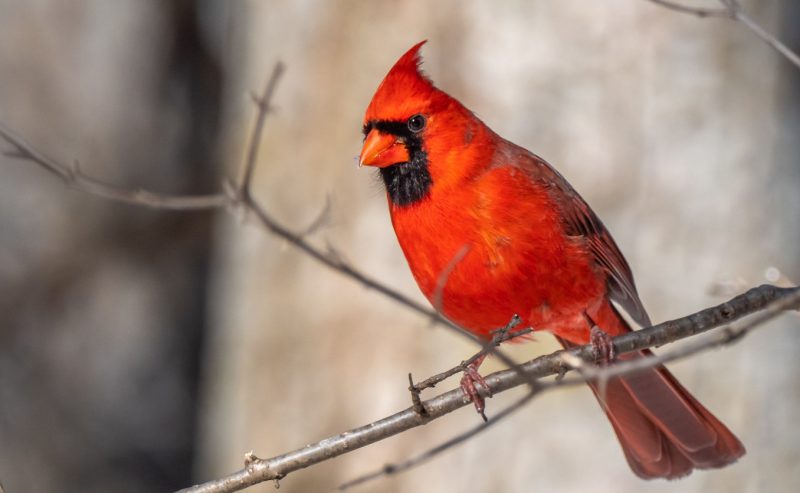
The Northern Cardinal, one of Hawaii’s most recognizable introduced birds, is admired for its vivid red plumage and proud crest. Males are entirely red with a black face mask around the bill, while females are brownish with reddish tinges on the crest, wings, and tail. Adults average 8–9 inches (20–23 cm) long, with a thick, cone-shaped bill perfect for cracking seeds.
This species was introduced to Hawaii in the 1920s and has since become widespread across all main islands. It thrives in a variety of habitats, including gardens, forests, and shrublands. Northern Cardinals are territorial and often seen perched on high branches singing their loud, whistling songs.
Their diet mainly consists of seeds, fruits, and insects. They are frequent visitors to backyard feeders where sunflower seeds are offered. Cardinals are non-migratory and remain in the same area year-round, forming strong pair bonds that last through multiple breeding seasons.
Breeding typically occurs from February through August in Hawaii’s mild climate. The female constructs a cup-shaped nest hidden in dense shrubs or low trees, where she lays two to four eggs. Both parents share feeding duties once the chicks hatch.
The Northern Cardinal’s bright plumage, cheerful song, and adaptability have made it a beloved part of Hawaii’s avian landscape. Though not native, it adds beauty and charm to the islands’ birdlife and is often one of the first birds recognized by visitors.
House Finch (Haemorhous mexicanus)
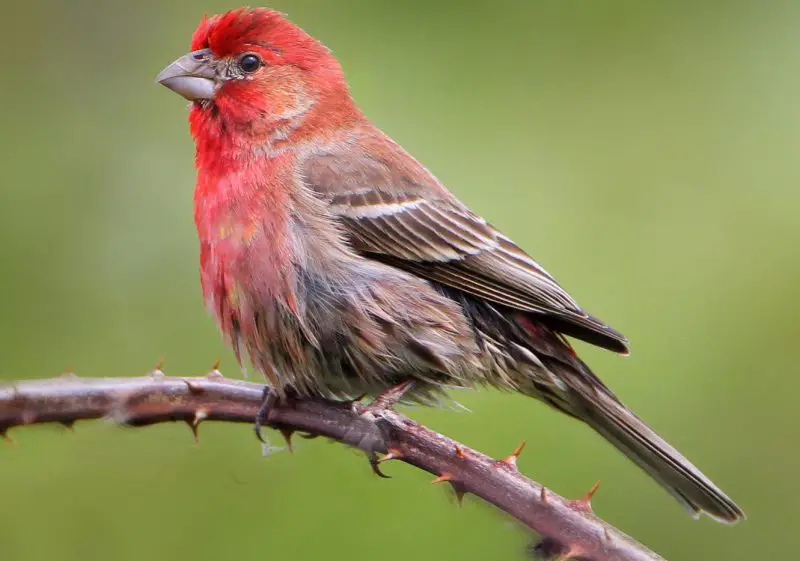
The House Finch is a small, lively bird with a bright red head and chest in males, while females are brown-streaked with no red coloration. Originally native to the western United States and Mexico, it was introduced to Hawaii in the 19th century and is now one of the islands’ most common urban birds. Adults measure about 5 to 6 inches (13–15 cm) long and have a slightly curved bill suited for seed-eating.
These finches are easy to recognize by their cheerful, warbling song and sociable behavior. Males display varying degrees of red coloration, influenced by diet—those consuming more carotenoid-rich foods develop deeper red feathers. Their constant chirping and active nature make them frequent visitors to backyards, gardens, and city parks across the islands.
House Finches feed mainly on seeds, fruits, and buds, often gathering in flocks around bird feeders or flowering trees. They also eat insects occasionally, especially during breeding season when they need extra protein. They are ground foragers, hopping energetically among grass patches or low shrubs.
Their nests are usually built in sheltered locations such as trees, building ledges, or even hanging flower pots. Both parents share the responsibility of feeding the chicks. The species has adapted remarkably well to Hawaii’s environment, thriving in both coastal and upland habitats.
The House Finch’s versatility and bright red head make it a familiar and charming resident of Hawaii’s cities and countryside alike. Its song and adaptability symbolize the successful coexistence of introduced species within the islands’ ecosystems.
Red Avadavat (Amandava amandava)
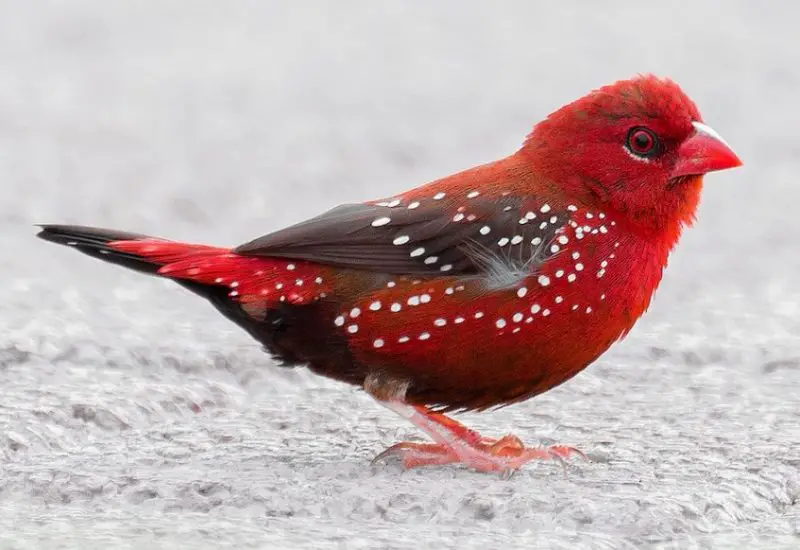
The Red Avadavat, also known as the Strawberry Finch, is a small, colorful bird native to Asia that has become established in Hawaii’s grasslands and agricultural areas. Males in breeding plumage are deep red with tiny white spots on their sides and a dark tail, while females and non-breeding males are olive-brown with lighter underparts. Adults are about 4 inches (10 cm) long and have short, thick bills suited for seed consumption.
This species is particularly striking during the breeding season when the males turn bright crimson, earning their name. Outside of the breeding season, both sexes appear duller but remain elegant and delicate in appearance. They are most active during early morning and late afternoon when foraging or socializing.
Red Avadavats prefer open habitats such as grasslands, marsh edges, and farmlands, especially near water sources. They form flocks that move together in synchronized flight patterns, often landing in patches of tall grass where they feed on grass seeds and small insects.
Their calls are soft and high-pitched, consisting of twittering notes and chirps. Nests are built low in vegetation, usually made of fine grasses and lined with feathers. During breeding, males perform short flight displays to attract mates, showing off their vivid plumage.
Though introduced, the Red Avadavat is now well established on several Hawaiian islands. Its bright color, gentle nature, and flocking behavior make it a delightful sight in the open landscapes of the islands.
Red-masked Parakeet (Psittacara erythrogenys)
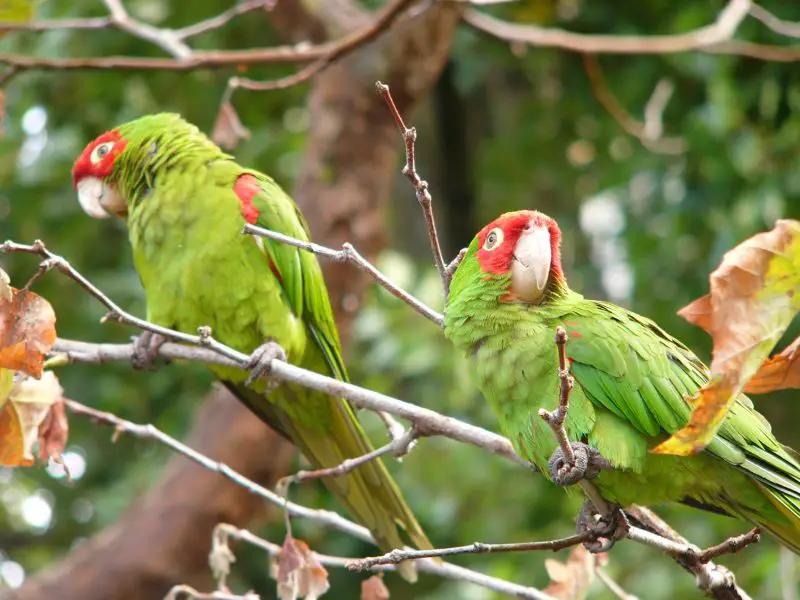
The Red-masked Parakeet, also known as the Cherry-headed Conure, is a large, green parrot with a striking red face and forehead. Native to Ecuador and Peru, it was introduced to Hawaii through escaped or released pet birds that have formed small feral populations. Adults measure around 13 inches (33 cm) in length, including their long, tapered tails.
This species is highly social and often seen flying in noisy flocks. Its bright red head stands out vividly against its green body and blue-tinted flight feathers. The beak is pale horn-colored, and the eyes are encircled by bare white skin, typical of many parrot species.
Red-masked Parakeets inhabit coastal areas, residential neighborhoods, and forest edges where fruiting trees and palm nuts are abundant. They feed primarily on fruits, seeds, and blossoms, often raiding gardens or feeding in groups on ornamental plants. Their calls are loud and screeching, which can be heard long before the birds are visible.
In Hawaii, they are most commonly found along the Kona coast of the Big Island and occasionally on Oahu. They often roost communally in trees or rocky cliffs and may use natural cavities for nesting.
Although not native, this species has adapted well to the Hawaiian climate. Its vivid colors and lively social interactions add an exotic flair to the islands’ birdlife. Conservationists monitor their populations to ensure they don’t compete excessively with native species.
Vermilion Flycatcher (Pyrocephalus obscurus)
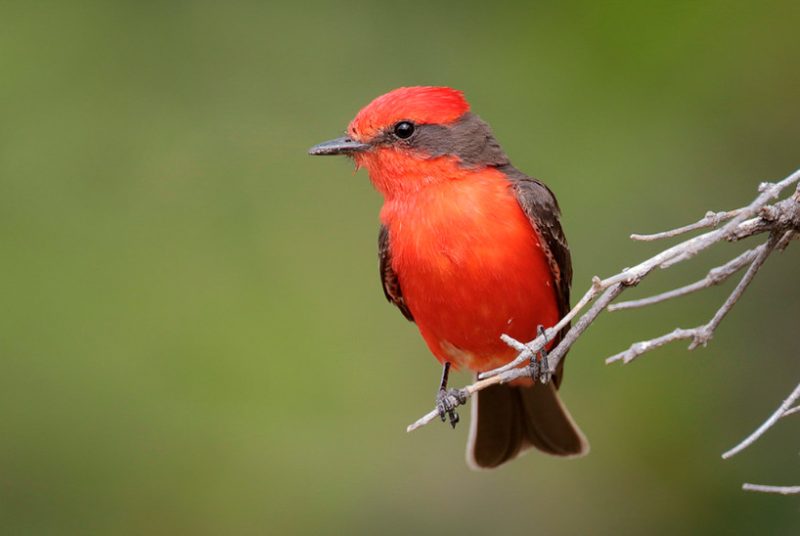
The Vermilion Flycatcher is one of the most brilliantly colored birds that occasionally appears in Hawaii. Males are unmistakable with bright red heads and underparts contrasted by dark brown or black wings and backs. Females are grayish with a peach-colored belly. Adults measure around 5.5 inches (14 cm) long.
This bird is primarily a rare visitor or vagrant in Hawaii, with occasional sightings on the Big Island. It’s more common in its native range of North and South America, where it inhabits open areas and deserts. The species belongs to the tyrant flycatcher family, known for agile aerial hunting of insects.
Vermilion Flycatchers perch openly on fences, branches, or posts, darting out to snatch flying insects mid-air before returning to the same spot. Their feeding behavior is a display of precision and grace, making them fascinating to watch.
They are usually solitary or seen in pairs, especially during breeding season. Males perform fluttering aerial displays while singing to attract females. The nest, built in a horizontal tree branch, is made of small twigs and grasses bound with spider silk.
While their presence in Hawaii is sporadic, each sighting excites birdwatchers due to their vivid coloration and lively behavior. They highlight the diversity and occasional surprises within the Hawaiian bird population.
Scarlet Tanager (Piranga olivacea)
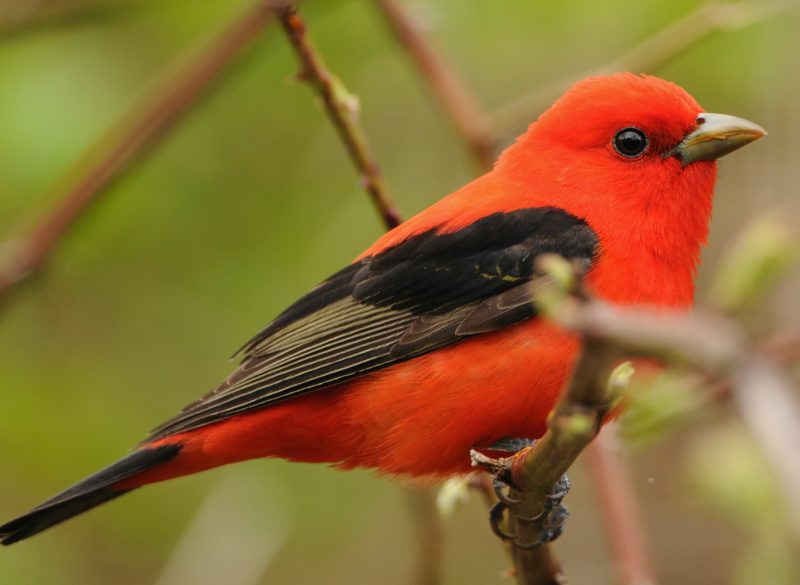
The Scarlet Tanager is a striking songbird rarely seen in Hawaii, recognized for its bright red body and contrasting black wings and tail. Males display this vivid coloration during the breeding season, while females are olive-yellow with darker wings. Adults measure around 6.5 inches (17 cm) long.
This species is a native of North America and typically breeds in deciduous forests of the eastern United States. Its presence in Hawaii is unusual, usually the result of wind drift or accidental migration. Still, occasional records show that this brilliant bird sometimes reaches the islands.
Scarlet Tanagers feed mainly on insects and fruit, catching flying insects mid-air or gleaning them from leaves. During migration and in tropical habitats, they rely more heavily on fruit. Their slender, pointed bills make them efficient feeders in dense foliage.
Their song is a series of rich, raspy notes, often compared to that of a robin but with a hoarser tone. They are usually solitary outside the breeding season and prefer the canopy layer of forests, where their bright colors stand out against green leaves.
Although rare in Hawaii, the Scarlet Tanager remains one of the most stunning red-headed birds ever recorded on the islands. Each sighting serves as a reminder of Hawaii’s connection to broader migratory patterns across the Pacific.
Tips for Spotting Red-Headed Birds in Hawaii
Look for Native Forests at Higher Elevations
If you’re hoping to see native species like the ʻApapane or ʻIʻiwi, head to higher-elevation forests such as those found in Hawaii Volcanoes National Park or Haleakalā National Park. These birds thrive where native ʻōhiʻa and lobelia plants bloom, offering a rich supply of nectar. Early morning is the best time to visit, as many honeycreepers are most active and vocal during that period.
Bring Binoculars and a Camera
Many red-headed birds in Hawaii are small, fast-moving, and spend their time in treetops or thick vegetation. A good pair of binoculars will help you observe details like plumage color and bill shape. A zoom lens camera is ideal for capturing stunning shots without disturbing the birds’ natural behavior.
Visit Parks and Urban Gardens for Introduced Species
Birds such as the Red-crested Cardinal, Northern Cardinal, and House Finch are most easily seen in city parks, golf courses, and suburban gardens. These areas provide open spaces, ornamental plants, and consistent food sources. Bring a small bag of birdseed or visit early in the morning when they are feeding.
Listen for Distinctive Songs
Each species has its own unique call or song. Cardinals produce melodic whistles, while ʻIʻiwi have sharp, squeaky notes. Learning these calls before your trip can make it easier to identify birds by sound, especially when they are hidden among dense foliage.
Respect Wildlife and Habitats
When birdwatching, maintain a respectful distance from all species—especially native honeycreepers that are sensitive to disturbance. Avoid playing recorded bird calls excessively, and never attempt to feed wild birds. Preserving Hawaii’s delicate ecosystems helps ensure these beautiful species continue to thrive for generations to come.
FAQs About Birds with Red Heads in Hawaii
What are the most common red-headed birds in Hawaii?
The most common red-headed birds in Hawaii include the ʻApapane, Red-crested Cardinal, and House Finch. These species can be found across several islands, with ʻApapane inhabiting native forests and the others thriving in urban or coastal areas.
Are all red-headed birds in Hawaii native species?
No. Only a few, such as the ʻApapane and ʻIʻiwi, are native to Hawaii. Most other red-headed birds like the Red-crested Cardinal, Yellow-billed Cardinal, and House Finch were introduced from other regions but have since adapted to local environments.
Where is the best place to see native red-headed birds?
Native species are best spotted in high-elevation native forests on islands like Hawaii (Big Island), Maui, and Kauai. Popular birdwatching sites include Hawaii Volcanoes National Park, Hakalau Forest National Wildlife Refuge, and Haleakalā National Park.
Do these birds feed on nectar or insects?
Feeding habits vary among species. Native honeycreepers such as ʻApapane and ʻIʻiwi primarily feed on nectar from native flowers, while cardinals and finches eat seeds, fruits, and insects. Some species, like the Vermilion Flycatcher, specialize in catching flying insects.
Are red-headed birds active year-round in Hawaii?
Yes, most species remain active throughout the year due to Hawaii’s mild tropical climate. However, their visibility may change with the flowering seasons—especially for nectar-feeding species like ʻApapane and ʻIʻiwi, which follow the bloom cycles of ʻōhiʻa trees.
Can introduced red-headed birds harm native Hawaiian species?
While most introduced birds coexist relatively peacefully, they can indirectly affect native species by competing for food and spreading diseases such as avian malaria. Conservation efforts focus on protecting native habitats and controlling disease-carrying mosquitoes to reduce these risks.
Do all islands have red-headed bird populations?
Yes, though the diversity varies by island. Oahu and the Big Island have the widest range of species, including both native and introduced birds. Maui and Kauai are excellent for spotting native honeycreepers in forest reserves.


